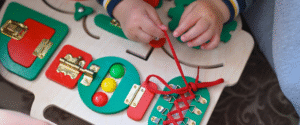
UNDERSTANDING MOTOR PLANNING AND COORDINATION
This month we are going to talk about motor planning and coordination.
Each child develops at a different rate and at Explore and Soar it’s our job to identify and offer intervention solutions to help that process.
Developmental Coordination Disorder is what postural and motor sensory based disorders are diagnosed under, in the DSM-V. We use sensory based motor disorder definitions, information and research to help us identify behaviours consistent with this, as occupational therapists.
One of the most common reasons we find that children are referred to Explore and Soar is difficulty with gross motor skills. This could be concerns regarding poor coordination, appearing clumsy and falling over a lot, difficulty with crawling or an inability to jump with two feet at a time, to skip or to ride a bike.
As part of our initial assessment process and during our intervention sessions, we pay close attention to how your child moves their body in various scenarios. This provides us with vital information regarding how your child is processing the varied types of sensory inputs around them.
Last year we wrote about Sensory Processing Disorders on our blog, how to correctly identify the warning signs and how to best assist your child. One of the types of sensory processing disorders that we only spoke briefly of was sensory-based motor disorders (SBMD) also commonly known as a developmental coordination disorder, as recently outlined in the DSM-V under the category of neurodevelopmental disorders.
In SBMD, we see children who have difficulties with “stabilising one’s body or thinking of/planning/sequencing or executing a series of movements based on sensory information outside and inside the body” (Miller, L.J., 2014, pg.14). SBMD can be categorised into two groups; Postural Disorder and Dyspraxia.
Postural disorder is seen in a child who has difficulty in maintaining the control of their body, to meet the demands of an activity. It involves our muscle tone, core strength and stability. It is the action part of all motor movements.
Children who have difficulty with ideation (forming an idea in the brain), planning and sequencing (identifying what steps are involved) and execution of motor movements fall into the dyspraxia category. This can occur across all motor movements including gross motor, fine motor, visual motor and oral motor. This is known as the planning part of all motor movements.
Motor planning is an automatic subconscious process that occurs every time we seek to move our body. We tend to take this process for granted. It occurs with many common daily activities such as opening a door, putting a jacket on, writing our signature, or chewing our meals. Once acquired it becomes like riding a bike – once you know how to do it, it begins to happen without too much conscious thought. Everything we do can be broken down into steps that our brain automatically executes via motor movements for successful completion of the desired activity. Children who are experiencing difficulties with motor planning find such tasks difficult, awkward and exhausting because of the level of conscious energy they have to put into completing each and every task!
One common result of motor planning difficulties is an impact upon the ability to form social connections and self-worth. This is often due to difficulties with oral motor (eg. speech), visual motor (eg. difficulties copying work from the board at school), fine motor (eg. difficulty with buttons, shoelaces) and gross motor skills (eg. difficulty keeping up with their peers at recess).
So how do we address motor planning difficulties in OT sessions?
We practice all the steps involved – ideation, planning and sequencing, and execution – so that it eventually becomes an easy and automatic process for the child. We provide opportunities for the child to create their own ideas for an activity, we break skills down into smaller steps to achieve success and we provide high repetition rates to allow feed forward and feedback loops to develop around the sensory information the child receives from the world around them. This is where we apply our knowledge and skills of activity analysis as OT’s to coach and teach your child skills that allow them to increase their independence.
This is not a quick process. It takes time to rewrite neural pathways in the brain for autonomic responses to sensory input. By addressing motor planning goals within intervention sessions, we are not only looking to increase a child’s skill level but also their self-esteem and confidence to complete activities that are meaningful to them, ultimately leading to a happier successful life!
If you have any questions around motor planning, please reach out to one of our therapists who will be able to provide more information to you.
Reference:
Miller, L.J. (2014) Sensational Kids: hope and help for children with sensory processing disorder (SPD). New York:Penguin Group.
ORIGINALLY PUBLISHED JUNE 2, 2021






Leave a Reply